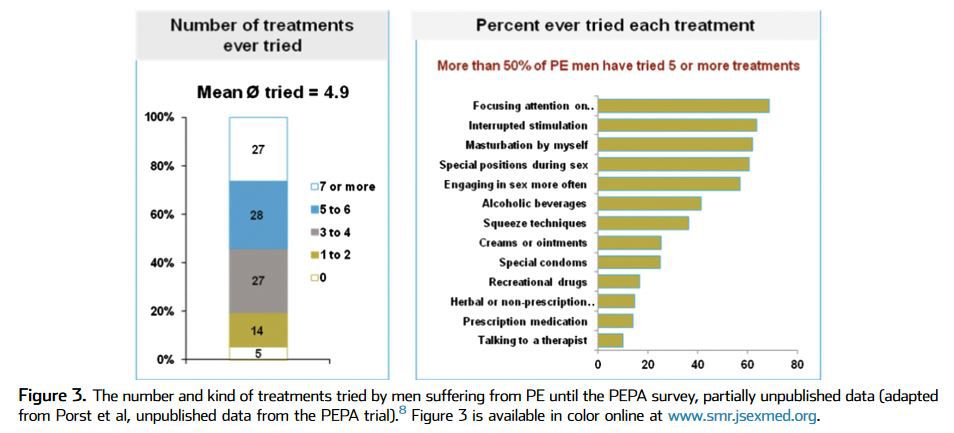Porst, H., & Burri, A. (2019). Novel Treatment for Premature Ejaculation in the Light of Currently Used Therapies: A Review. Sexual Medicine Reviews, 7(1), 129–140. doi:10.1016/j.sxmr.2018.05.001
Hyperlink: ScienceDirect
Novel Treatment for Premature Ejaculation in the Light of Currently Used Therapies: A Review
Abstract
Abstract Introduction Besides erectile dysfunction,
premature ejaculation (PE) is the most frequent male sexual disorder
and shows a high level of bother and distress. The negative consequences
of long-term and unsuccessfully treated PE on both patient and partner
are well established in the literature and include personal distress,
impairment of the partner’s sexual function, and interpersonal
difficulties. Aim To outline the consequences of untreated PE and
the advantages and disadvantages of currently available treatment
options with a special focus on a new topical eutectic
lidocaine/prilocaine metered dose spray (Fortacin; Lidocaine/Prilocaine,
Recordati, Milan, Italy) which represents the second officially
approved drug in this indication. Methods Narrative overview of the
literature synthesizing the findings of literature retrieved from
searches of computerized databases such as Web of Science, Medline,
PubMed, and Google Scholar, hand searches, and authoritative texts.
Combinations of keywords including premature ejaculation, ejaculatory
control, intravaginal ejaculation latency time, IELT, PE, PDE5
inhibitors (PDE5i), SSRIs, topical anesthetics, lidocaine, prilocaine,
and treatment were used. In the end, 59 studies published between 2000
and 2018 were considered relevant for this review. Main Outcome
Measures Published studies on PE-related negative psychosocial
outcomes, as well as advantages and disadvantages of currently available
off-label and officially approved treatment options. Results
Although a variety of treatment options for PE have shown marked
improvements in stopwatch-measured intravaginal ejaculation latency time
(IELT) and patient-reported outcomes as assessed by the Premature
Ejaculation Profile (PEP), none of the investigated drugs has reached
market approval. The only so far officially approved medication—dapoxetine—is
characterized by high discontinuation rates of up to 90%, mostly
because of high side effects, cost issues, efficacy below expectations,
and the need for scheduling sexual intercourse. Conclusion With the
official approval in Europe the new dose-metered lidocaine-prilocaine
spray (Fortacin) may become a real first-line therapy option for PE and
may offer a satisfactory and affordable solution, especially because of
its unique galenic preparation, making its handling easy and customer
friendly. In addition, it has the potential to significantly increase
the currently low patients’ acceptance of available monotherapies and
become an established second-line therapy for the severe PE patients
with IELTs Porst H, Burri A. Novel treatment for premature ejaculation
in the light of currently used therapies: A review. Sex Med Rev 2019;
7:129–140.
